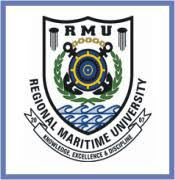| 1. R-2R is _______ converter |
| 2. What does Data refer to |
| 3. The OSI has ______ layers |
| 4. Protocols deals with |
| 5. _______ can detect and correct errors in data transmission |
| 6. Spread spectrum (SS) is a ___________ technique that distributes a signal and its sidebands over a very wide bandwidth.
|
| 7. The most widespread use of SS is in cellular telephones is known as |
| 8. The two most widely used wideband modulation methods are |
| 9. QAM uses both |
| 10. Hartley's Law is mathematically expressed as |
| 11. FSK, PSK, QAM, OFDM are |
| 12. Transimssion Efficiency focuses on |
| 13. Encoding makes data ________ with medium |
| 14. Companding deals with data |
| 15. Parallel data transmission is impractical for long-distance communication because of |
| 16. ASCII and EBCIDC are widely used codes in |
| 17. In digital codes, data processed and stored by computers can be in |
| 18. The basic transmission-reception system is a ______ system. |
| 19. Some examples of linear codes |
| 20. To avoid aliasing |
| 21. Analog to digital conversion includes |
| 22. Which needs re-sending of signal? |
| 23. The frequency hopping system uses ______ modulation scheme |
| 24. CDMA rejects |
| 25. The process of converting the analog sample into discrete form is called |
| 26. Some advantages of spread spectrum are |
| 27. The sequence of operations in which PCM is done is |
| 28. _______ is s benefit of Digital transmission of data |
| 29. Sampling must be done at______ rate |
| 30. Sample and Hold Circuit helps the_________ process |
| 31. Antennas can usually handle transmitting and receiving of electromagnetic waves. This property is called |
| 32. What is the name given to undesirable interference that is added to a signal being transmitted? |
| 33. A signal with a wavelength of 1.5 m has a frequency of |
| 34. A radio wave used in point to point communication consists of |
| 35. In the electromagnetic wave spectrum, the frequency of radio waves ranges from ??? to ???Hz |
| 36. A process where the received signal is transformed into its original form is |
| 37. A device that can perform both modulation and demodulation is called |
| 38. The process of impressing intelligence on the carrier is called |
| 39. Which characteristic of a radio receiver refers to its ability to reject an unwanted signal |
| 40. There is distortion in intelligence when the modulation index, |
